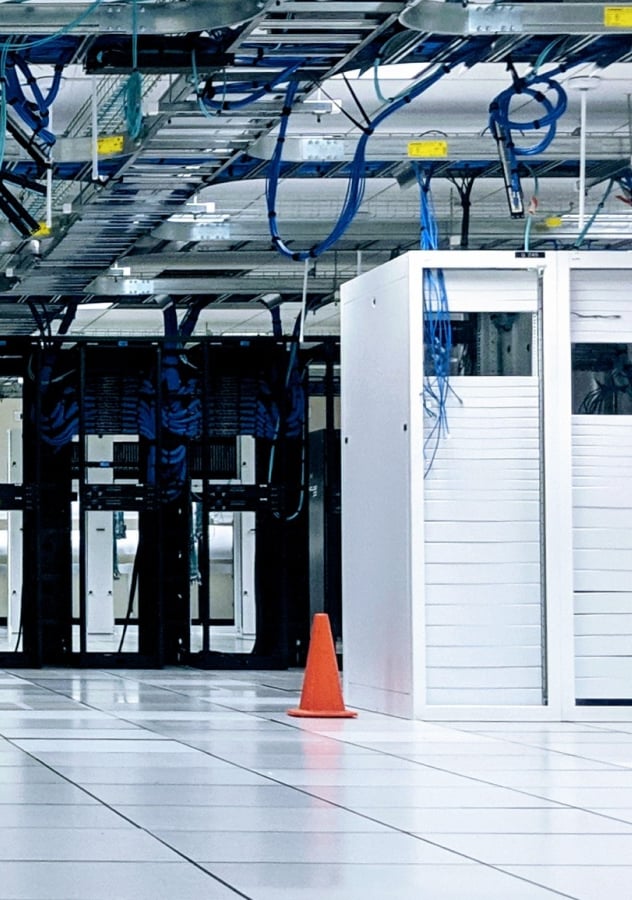Choosing between SIP trunking and ISDN remains a pressing IT challenge with significant impacts on costs, flexibility, and business continuity. This article cuts through generic advice, offering a technical and strategic deep dive tailored for today’s infrastructure realities.
ISDN’s global phase-out has transformed this decision from a simple comparison into a critical urgency. Many countries have set firm deadlines to retire ISDN networks, pushing businesses to rethink voice infrastructure. SIP trunking isn’t just a replacement, it’s the backbone of modern communication systems built to scale, integrate, and innovate.
Understanding the differences today prepares organizations to avoid costly disruptions and align voice architecture with future demands. The following sections will break down how SIP and ISDN operate, explore real-world cost impacts, resilience strategies, and migration paths. This isn’t theory, it’s practical guidance for making the right move before legacy networks vanish completely.
Key Takeaways
- ISDN uses dedicated circuit-switched lines (T1/E1) with fixed channels and heavy hardware needs, while SIP trunks run virtually over IP networks, enabling dynamic scaling, faster setup (2–5 days vs 4–6 weeks), and lower maintenance.
- SIP costs 50–70% less than ISDN over three years, due to reduced line rentals, maintenance, and call charges, while offering instant channel provisioning and better geographic flexibility.
- SIP supports modern resilience with cloud failover, multi-carrier redundancy, and SD-WAN routing, compared to ISDN’s single points of failure tied to physical circuits.
- The global ISDN phase-out (UK by 2025, Germany completed) makes SIP trunking not just an option but a necessity for continuity, compliance, and integration with UCaaS/CRM systems.
- Hybrid migration paths minimize risk: add SIP gateways to existing PBX systems, run SIP and ISDN in parallel, and phase numbers over gradually to avoid downtime.
The Technical Core — How SIP and ISDN Actually Work
Understanding the fundamental differences between SIP trunking and ISDN helps clarify why the shift away from legacy systems matters so much. Their distinct architectures shape deployment, maintenance, and ongoing flexibility. Before diving into cost or resilience, it’s crucial to grasp how each technology handles voice traffic and infrastructure demands.
Infrastructure Breakdown (Wired vs Virtual)
ISDN relies on dedicated physical lines, typically T1 or E1 circuits, using circuit-switched technology. These lines carry multiple PRI channels, each reserved for one simultaneous call. The infrastructure ties voice traffic to specific hardware and physical connections.
SIP trunking, by contrast, operates over IP networks as virtual trunks. It uses packet switching to send voice data over broadband or private IP links. This approach consolidates voice and data on a single network, reducing physical cabling and enabling greater flexibility.
| Feature | ISDN | SIP Trunk |
| Infrastructure | Dedicated wired lines (T1/E1) | Virtual trunks over IP networks |
| Switching method | Circuit-switched | Packet-switched |
| Channels per line | Fixed (PRI channels) | Dynamic, based on bandwidth |
| Physical footprint | High—requires hardware and wiring | Low—software-defined, minimal cables |
A visual comparison shows ISDN’s physical line dependence versus SIP’s virtual network paths, highlighting SIP’s adaptability to cloud and hybrid environments.
Deployment and Maintenance Profiles
Deployment timelines reflect these architectural differences. ISDN setups often take 4 to 6 weeks due to physical line provisioning, hardware installation, and vendor coordination. SIP trunks typically deploy in 2 to 5 days, with no need for new physical lines.
Hardware demands also vary sharply. ISDN requires on-site PBX hardware, dedicated routers, and physical cabling. SIP trunks reduce hardware footprint, sometimes requiring only a software upgrade or session border controller.
Vendor lock-in risks tend to be higher with ISDN, where carriers control physical lines and hardware support. SIP trunking offers more vendor choice and flexibility, leveraging standard internet protocols.
Technical staff need to shift accordingly. ISDN maintenance calls for specialized telecom technicians, while SIP leans on IT teams familiar with networking and VoIP protocols.
| Aspect | ISDN | SIP Trunk |
| Time to deploy | 4–6 weeks | 2–5 days |
| Hardware footprint | Large (PBX, routers, lines) | Small (SBCs, soft gateways) |
| Vendor lock-in | High | Low to moderate |
| Technical staff | Telecom specialists | IT/network engineers |
This foundational contrast sets the stage for examining cost impacts, resilience, and migration strategies that follow.
Cost Modeling — Real-World SIP vs ISDN Budget Impact
Understanding the financial impact of switching from ISDN to SIP trunking remains critical for any business planning future communications infrastructure. Beyond headline savings, comparing fixed and variable costs, maintenance, and hidden fees reveals why SIP often delivers superior value over time. Real-world data provides the clarity IT leaders need to move from uncertainty to confident budgeting.
Fixed vs Variable Costs
ISDN costs typically include fixed line rentals, hardware maintenance, and per-minute call charges, often higher for international or long-distance calls. Additionally, ISDN users may face termination fees or penalties for contract changes.
SIP trunking shifts much of the cost into variable, usage-based pricing, usually with flat monthly fees for trunk channels. Maintenance costs drop as physical hardware shrinks and software-based management improves. Call charges tend to be significantly lower, especially internationally.
| Cost Component | ISDN (Monthly) | SIP Trunk (Monthly) |
| Line Rental | $300 (per T1/E1) | $150 (per trunk channel) |
| Maintenance | $100 | $30 |
| Local Call Charges | $200 | $100 |
| International Calls | $400 | $100 |
| Hidden Fees (e.g., termination) | $50 | $0 |
| Total Monthly Cost | $1,050 | $380 |
Over a typical three-year span, these differences compound significantly. The following table outlines the Total Cost of Ownership (TCO) for both systems.
| Cost Category | ISDN (3 Years) | SIP Trunk (3 Years) |
| Line Rentals | $10,800 | $5,400 |
| Maintenance | $3,600 | $1,080 |
| Call Charges | $20,400 | $7,200 |
| Hidden Fees | $1,800 | $0 |
| Total TCO | $36,600 | $13,680 |
Resilience and Redundancy — Is SIP Actually Reliable?
Concerns about SIP trunk reliability often center on its dependence on the internet. Unlike traditional ISDN lines with dedicated circuits, SIP trunks operate over IP networks vulnerable to outages and performance issues. However, modern implementations address these risks with robust technologies and strategic designs that can deliver uptime comparable to or exceeding legacy systems. Understanding vulnerabilities alongside mitigation tactics helps businesses build confidence in SIP’s resilience.
Internet Dependency: Risk or Strength?
SIP trunks rely on internet connectivity, exposing voice traffic to outages, packet loss, jitter, and latency. These factors can degrade call quality or cause dropped calls. Unlike dedicated ISDN circuits, the public internet lacks guaranteed service levels by default.
Yet, organizations with well-planned networks use Quality of Service (QoS) configurations to prioritize voice packets. SD-WAN solutions dynamically route traffic across multiple connections, minimizing disruption. LTE or 5G backups activate automatically when primary links fail. Encryption protocols such as SRTP ensure security despite internet exposure.
This layered approach turns internet dependency from a vulnerability into a flexible strength. SIP trunks adapt quickly to changing network conditions, maintaining voice service even during partial outages.
SIP Failover and Disaster Recovery Examples
Smart SIP deployments build redundancy at several levels:
- Dual Providers: Contracts with multiple SIP carriers enable automatic failover if one service drops.
- IP-PBX Failover: On-premises or cloud-based IP PBXs configured for high availability switch calls seamlessly.
- Cloud-Hosted Backup Trunks: Cloud SIP services serve as backups, rerouting calls instantly when local trunks go down.
These tactics form a resilient architecture that mitigates single points of failure common in traditional telephony. For teams planning SIP rollouts, a detailed disaster recovery checklist ensures no step gets missed, from failover testing to call routing policies.
Scalability and Growth Planning
Businesses need communication systems that grow with them. Legacy ISDN lines limit expansion and geographic reach. SIP trunking removes those barriers, offering flexible capacity and integration that match evolving business demands. The shift from fixed circuits to software-driven connections enables more agile scaling and seamless adoption of new communication tools.
Future-Proofing Beyond 2025
SIP trunks allow instant provisioning of additional channels, adapting to sudden spikes in call volume without physical installation delays. Adding or removing capacity happens remotely, often within minutes.
Geographic flexibility plays a major role. SIP supports unified communication platforms, connecting offices, remote workers, and mobile devices under one infrastructure. Video conferencing, chat, and CRM integrations consolidate workflows and improve collaboration.
Full cloud telephony adoption becomes smoother with SIP as a foundation. Services like Microsoft Teams and Zoom Phone rely on SIP trunks to bridge legacy voice networks with cloud ecosystems, enabling businesses to modernize without disruptive rip-and-replace projects.
ISDN Phase-Out Timeline: What’s Left?
ISDN’s global retirement accelerates, urging businesses to act quickly.
| Country | Status | Sunset Year |
| United Kingdom | Full ISDN switch-off confirmed | 2025 |
| Germany | ISDN fully retired | Completed |
| United States | Partial phase-out by Tier 1 carriers | Ongoing |
Other regions follow similar trajectories, pushing enterprises to plan migrations now. Staying on ISDN risks service interruptions, rising costs, and lost competitive edge.
Compatibility, Migration and Hybrid Options
Moving from ISDN to SIP trunks raises questions about existing hardware and migration strategies. Many businesses worry about compatibility with their current PBX systems and how to switch without disruption. Understanding the options helps plan a smooth transition while preserving investments and minimizing downtime.
Will My Existing PBX Work With SIP?
Many legacy PBX systems connect to SIP trunks via gateways that translate between traditional telephony protocols and SIP. This setup lets businesses keep their current hardware while gaining SIP benefits. Testing SIP readiness involves verifying network capacity, firewall settings, and codec support.
On-premises PBX systems often require hardware or software upgrades for full SIP compatibility. Cloud-based PBX platforms simplify this by natively supporting SIP trunks, reducing maintenance overhead and enabling faster feature deployment.
Here’s a simple decision guide:
| Scenario | Recommended Approach |
| Legacy PBX, no SIP support | Add SIP gateway |
| PBX supports SIP natively | Direct SIP trunk connection |
| Aging PBX, costly upgrades | Consider cloud PBX migration |
Phased Migration Strategy
Switching telephony systems demands careful planning to avoid downtime and user confusion. A phased approach spreads changes over manageable steps:
- Audit: Evaluate existing infrastructure, call patterns, and compliance needs.
- Bandwidth readiness check: Confirm network capacity and quality for SIP voice traffic.
- Number porting timeline: Coordinate with carriers to preserve existing phone numbers.
- Parallel running: Operate ISDN and SIP trunks simultaneously during testing.
- Cutover: Fully transition to SIP, providing training and support for users.
Each step focuses on risk reduction and smooth user experience, ensuring communications stay reliable throughout migration.
Summary Table — SIP vs ISDN (2025 Edition)
Choosing between SIP and ISDN requires clear insight into key business factors. The table below contrasts essential features to help decision-makers quickly grasp each option’s strengths and limitations.
| Feature | SIP Trunking | ISDN |
| Setup Time | 2–5 days, minimal physical setup | 4–6 weeks, extensive hardware install |
| Call Quality | High, dependent on internet quality | Consistently reliable via circuit-switching |
| Cost Efficiency | Lower CapEx, predictable OpEx | Higher upfront and maintenance costs |
| Scalability | Instant channel add/remove remotely | Physical line changes required |
| Security | Supports encryption and fraud controls | Limited encryption options |
| Disaster Recovery | Cloud failover, multi-route options | Single point of failure in physical lines |
| Geographic Flexibility | Supports remote/global locations | Fixed to physical site |
| Future Viability | Future-proof with UCaaS integration | Phasing out globally, end of life imminent |
| Maintenance Overhead | Low, software-driven management | High, hardware maintenance required |
This comparison clarifies why many businesses pivot toward SIP trunking as they modernize their communications. The ability to scale quickly, integrate with cloud systems, and control costs defines the future-ready choice.
Final Take: Why SIP Isn’t Just a Replacement — It’s an Upgrade
SIP trunking doesn’t simply replace ISDN lines at a lower cost. It builds the foundation for next-generation communications that transform how businesses connect.
Viewing SIP as just a compliance necessity misses its strategic value. It unlocks seamless integration with cloud platforms, unified communications, and customer engagement tools. It bridges legacy PBX systems with modern UCaaS and CRM solutions, creating a cohesive communication ecosystem.
Businesses that fully embrace SIP position themselves for agility, scalability, and innovation. This shift prepares organizations for evolving demands, remote work realities, and future technologies like AI-driven routing and 5G connectivity.
Auditing your entire communications stack, PBX, CRM, UCaaS, is crucial. SIP trunking acts as the connective tissue enabling these systems to work in harmony, driving operational excellence and competitive advantage.
Choosing SIP means stepping into the future of business communications, not just managing an old system’s end of life. It’s an upgrade that opens doors, not a cost-cutting measure alone. Contact DIDlogic today.
Further Reading










